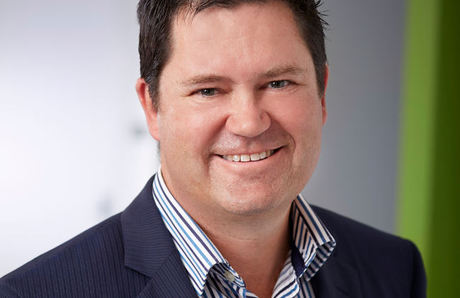Tech Insights: Interview with David de Laine, Clearswift's ANZ Region Director

In our new Tech Insights series, we quiz industry leaders to get their views of what the year ahead holds for the IT world. Today we speak with David de Laine, Clearswifts ANZ Region Director.
What do you see as the two or three biggest growth opportunities for your customers in 2015, and why?
Organisations have a massive opportunity to look attractive to the new generation if only employers see what is in front of their faces. Adapting to the new generation means that organisations should start to “Value people on their potential, not their history” (Bo Bennett). The millennial (Gen Y) or digital native can show how they can reduce the six degrees of separation down to three degrees with social media and so on.
There are many ways that organisations can dream up ways to grow, but many of the answers already exist within your organisation: invest in and value employees; exploit all your technology/features; consolidate, as ICT development is heavily influenced by integration; and small acorns - smart people have smart ideas, so trust in them.
What are your customers demanding of you more today than five years ago, and how will you meet these requirements in 2015?
Simplification of their operations. The barriers to simplification are increasing with customers experiencing pressure from budget cuts, cyberattacks, commercial diversification, information growth, increased supply chains, mobile working and internet-connected devices (IoT). The concern is that evolution is evolving faster than at any other time. Customers need to take a breath and try to go back to basics, rather than creating more complexity in an already complex ICT environment. Clearswift is doing exactly that with our Adaptive DLP solutions, by addressing the elements of DLP that waste resources and restrict business operations, whilst also mitigating many of the pressures from cyberattacks, insider threats, information sharing and increasing employees’ awareness of critical information protection in real time.
Do you expect to face an increasing burden from new legislation and regulations? How will your company tackle this?
Regulations in Australia are being introduced/updated, but more importantly there are more regulators being employed to address the new Web 2.0, mobile age and the digital generation. The new European General Data Protection Regulation, for example, requires an Australian organisation that accesses a European citizen’s personal information to prove they meet the new EUGDPR standard or face fines of up to 5% of worldwide revenue or €100 million.
Clearswift Adaptive DLP offerings protect organisations from intentional data breaches from within the organisation and also from external actors attempting to gain access to sensitive information using malware. More importantly, we protect employee from themselves.
Aside from your own, which ICT companies will be the ones to watch in 2015 and why?
Companies should keep a close eye on the big IT vendors as they start their breakups - notably HP and Symantec - into separate organisations, but there are also rumours that EMC, Cisco and Oracle are under pressure to transition their businesses to be (supposedly) more nimble. Organisations should also look at Australian start-ups both for innovation and economic benefits. A surprise flanking movement could see end users leap-frog the incumbent vendors and invest in start-ups to gain real advantage in ICT execution.
Building AI success in ANZ organisations
Success with AI will depend on how well organisations can connect innovation with discipline.
Gartner identifies the top strategic technology trends for 2026
This year’s top strategic technology trends highlight those that will drive significant...
Maximising business value through sustainable IT infrastructure
To fully unlock the value of sustainable IT, a mindset shift is needed.




